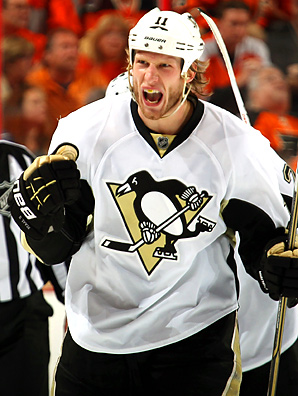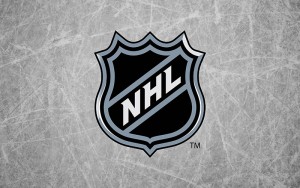The fact that the Pittsburgh Penguins traded center Jordan Staal at the 2012 NHL Entry Draft isn’t what came as a surprise to most fans. What came as a surprise is the fact that the Penguins opted to trade Staal when he still had an entire year left on his contract and before next season’s trade deadline, when they might have gotten more in return.
Granted, the move could have been a preemptive strike against the uncertainty surrounding the forthcoming collective bargaining agreement, but the fact remains that Staal  got his wish and will no longer play in the shadow of Sidney Crosby and Evgeni Malkin.
got his wish and will no longer play in the shadow of Sidney Crosby and Evgeni Malkin.
So what did the Penguins get?
In return, they received center Brandon Sutter, defense prospect Brian Dumoulin and the eighth overall pick in the draft – which they used to select high-scoring Portland Winterhawk defenseman Derrick Pouliot.
In the long-term, this could end up being a win-win trade for both the Penguins and the Carolina Hurricanes, the other team involved in the trade. In the short term, however, the trade fails to address the pressing needs of the Penguins.
In five postseason games last season against the Philadelphia Flyers, the Penguins surrendered 30 goals. That’s a lot. Now, that series was an all-out duke-it-out battle, but the Penguins also finished 17th in the league during the regular season in average goals against with a 2.66 average. They had the third best penalty kill during the regular season, though, showing that five-on-five play was the issue over special teams.
Staal is widely heralded as a great two-way player, and certainly one of the Penguins’ better penalty killers, and he will be missed this season in that role. It might not be a stretch to assume that the Penguins will see a decline on their penalty kill without Staal. Losing him certainly doesn’t improve the team defensively at full strength or on special teams and the return for Staal in the trade doesn’t address the immediate defensive needs for the Penguins.
Will the Penguins still win games? Absolutely. They will win truckloads of them. After all, they do still have two of the best players in the NHL in Sidney Crosby and Evgeni Malkin. A healthy Crosby could easily lead the league in points this season, but Malkin will need to be right there with him instead of falling off the radar like he tends to do when Crosby is around. Add in the emergence of James Neal as a bona fide goal-scoring threat and you have one pretty solid offense core without Staal. Kris Letang adds plenty of offensive prowess from the blue line as well. Add together all of these components and it’s very easy to see that the Penguins will have no issues scoring goals.
The problem is preventing them. You can’t even blame goalie Marc Andre Fleury here because he actually had a decent season last year according to his standards. His 2.36 goals against average was close to a career best, and his .913 save percentage was about average when compared to his career numbers. Even if Fleury does struggle, the addition of Tomas Vokoun will give the Penguins more options in net.
The departure of Staal may not have a heavy impact on the Penguins offensively, but his two-way skill will be missed in the defensive zone – especially on the penalty kill. Two defenseman came over for Staal, but neither will likely pay immediate dividends this upcoming season. Instead, the Penguins will rely heavily on their offensive strength to win games.
Playoff Bound? Definitely.


